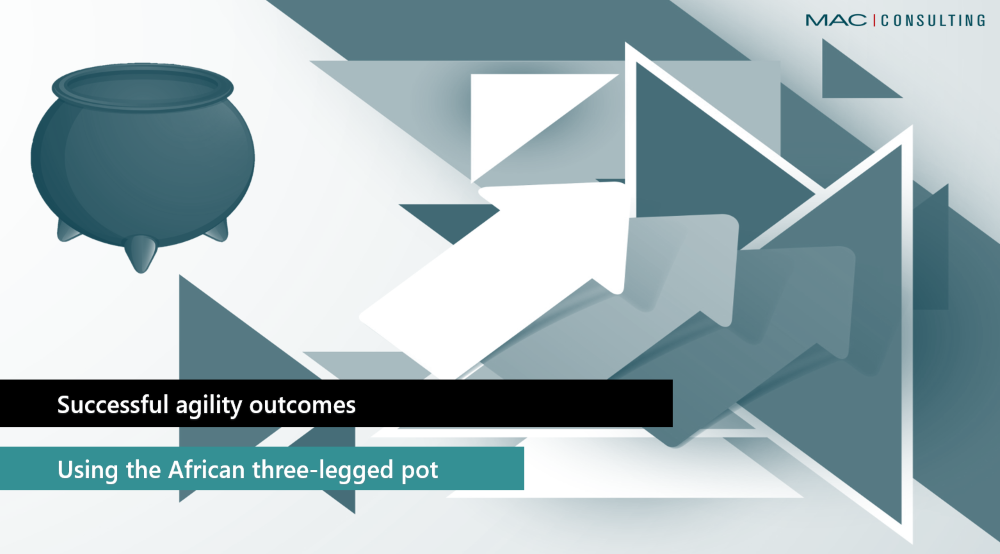When organisations decide to focus on ‘Being Agile’ or ‘Agility’, they hire agile coaches to guide their teams on this journey. Many decision-makers think that just the presence of the agile coach will guarantee agility outcomes from their delivery teams. This is a fallacy and many organisations risk their ‘Being Agile’ journey due to this assumption, which, if not dealt at the onset, can result in a lot of waste and frustration.
An Agile coach’s key focus area is to help teams involved in the delivery to understand what ‘Being Agile’ is (mindset, behaviors, principles, practices, metrics, tools, and so on) and to help them tap its maximum potential in the context of their delivery or work to be done.
Using the analogy of the African three-legged pot for delivery teams responsible to deliver successful agility outcomes, the three legs of the pot provide the necessary foundation. The Coach’s Commitment is one leg contributing to the foundation. Let us explore the other two legs in view of commitment from the other crucial roles.
- The Product Owner Commitment
The type and priority of the ‘work to be done’ for desired success contributing to organisation vision is the responsibility of the Product Owner role. This role is expected to be a domain expert and must have an effective understanding of the right customers and the right value to be delivered within the desired timelines for maximum success. Sub-optimal contribution from this role may lead to an incorrect understanding of the ‘work to be done’ and, despite the team’s focus on ‘Being agile’, it will not result in the desired agility outcomes.
- The Leadership Commitment
‘Being Agile’ requires a shift in mindset, behaviours and a different way of understanding and doing work that contributes effectively to the organisational vision. People leadership plays a key role in ensuring the upskilling for agile ways of working is tied to development goals of each individual, which contributes to team development for ‘Being Agile’ and is aligned to enhanced work delivery outcomes. If not done, it will pose the risk of people doing work with an existing mindset, behaviours and ways of working despite the coach’s effort to upskilling the team on ‘Being Agile’. There are many different reasons for this – if not tied to development goals, the sense of urgency and it seriousness is diluted and people feel that it is optional or can be adopted when and if they feel like it, especially if their intrinsic agility is not high. This situation is worsened in delivery pressures where all the upskilling focus for agile ways of working seems to be an overhead rather than an enabler to handle delivery challenges more effectively to achieve enhanced outcomes despite constraints. Rather, people fall into existing ways of work delivery with undesired consequences of overtime, sub-optimal quality of delivery, delivery debt, people frustration, lost opportunities for success despite high effort, and so on.
All work to be done, whether in agile or traditional ways requires a guiding purpose to ensure the right contribution to organisational vision. In absence of this vision, an effective team is anchorless and, despite the ‘Being Agile’ skills, they may be limited in producing desired outcomes. Leadership plays a key role in ensuring the right vision for the team.
Therefore, for enabling teams to achieve successful ‘Being Agile’ or ‘Agility’ outcomes, it requires a partnership between Leadership, Product Owners and Agile Coaches to provide the right foundation to the delivery teams. Every role’s commitment is equal and crucial. Sub-optimal contribution from any role results in a sub-optimal foundation for the team – a broken three-legged pot that is unable to deliver the desired outcomes.
Connect with the MAC-agile team to ensure the right partnership and synergy between the three key roles for successful agility outcomes.




